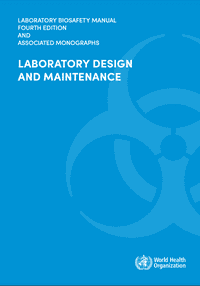LBM, 4th Edition: Laboratory Design and Maintenance Monograph
[LBM 4: Laboratory Design and Maintenance]
One of seven monographs associated with the 4th edition of the WHO LBM. This monograph covers laboratory design and maintenance, the process of building or updating a laboratory. This monograph describes design considerations for different types of lab facilities and is targeted to the people involved in the lab design process.
SUMMARY
The Laboratory design and maintenance monograph covers laboratory design and maintenance, the process of building, renovating or repurposing a laboratory. This monograph describes design considerations for different types of lab facilities and is targeted to the wide range of people, including construction engineers and architects, that would be involved in the lab design process. This monograph was written with the understanding that lab construction is an infrequent event, and care must be taken so that lab facilities can remain functional throughout the decades that the laboratory is in use. This monograph is designed to be used with the Risk Assessment Monograph, and gives advice on how to construct facilities if it is determined that core requirements, heightened control measures or maximum containment measures are needed. The monograph also covers how to safely decommission a laboratory. The creation of this monograph was funded by Global Affairs Canada, the United States Department of State and the United States Defense Threat Reduction Agency.
This monograph was one of seven associated with the 4th edition of the WHO Laboratory Biosafety Manual (LBM). The LBM guidelines have been globally recognized as a fundamental resource for laboratory biosafety since the first edition was released in 1983. While the standards outlined in this manual are not legally binding, they have become the defacto global standard for biosafety and have inspired many national codes. These guidelines are developed with experts from around the world, and were most recently updated for the fourth edition in 2020, which places a larger emphasis on an evidence and risk based approach to biosafety and biosecurity. Previous editions of the manual have been published in 13 languages, although, as of the last time this library was updated, the 4th edition was only available in English. The development of the manual is led by the Biosecurity and Health Security Interface at the WHO, a team who also supports national implementation efforts of the International Health Regulations and emergency preparedness.


..png)
